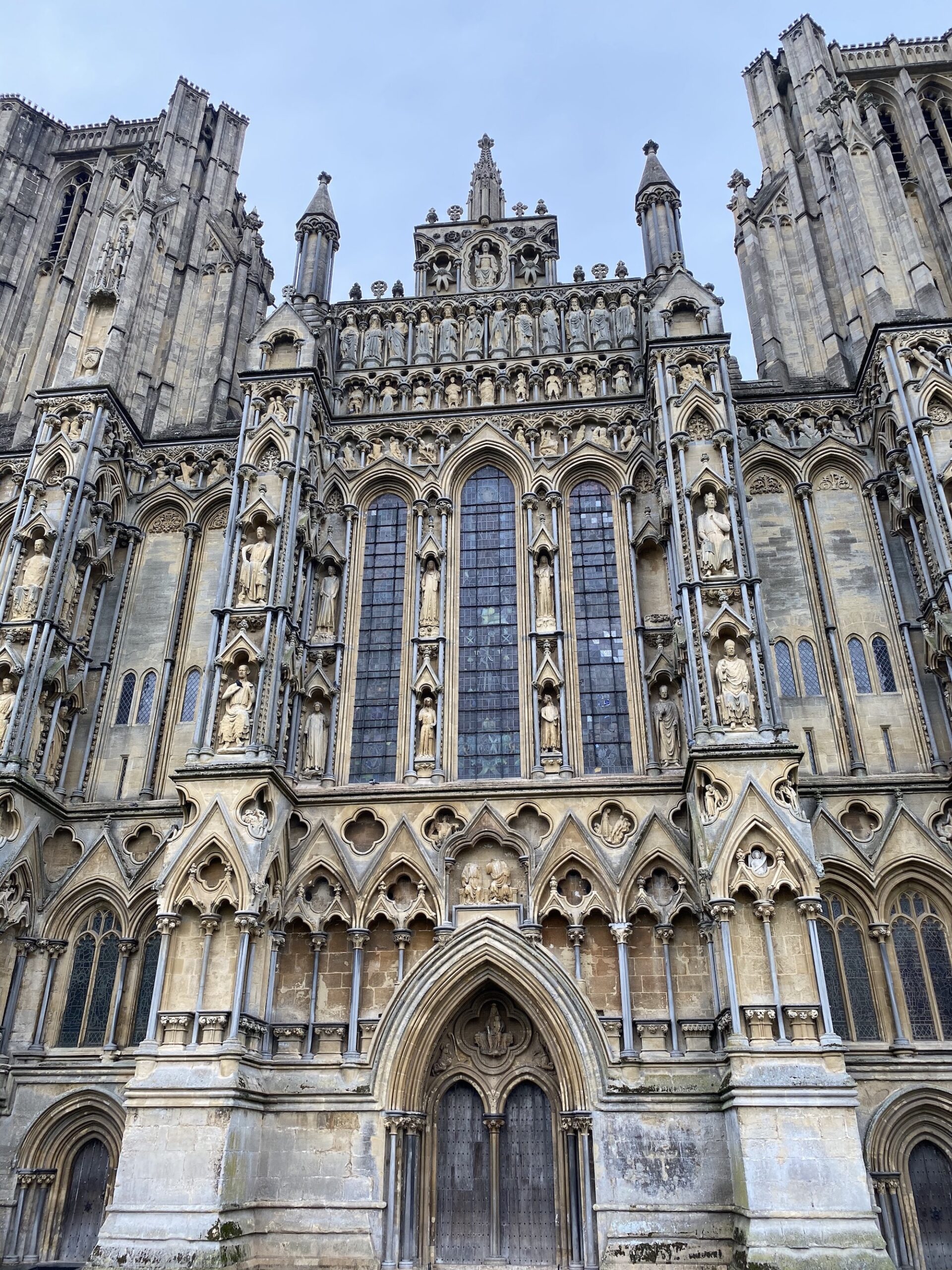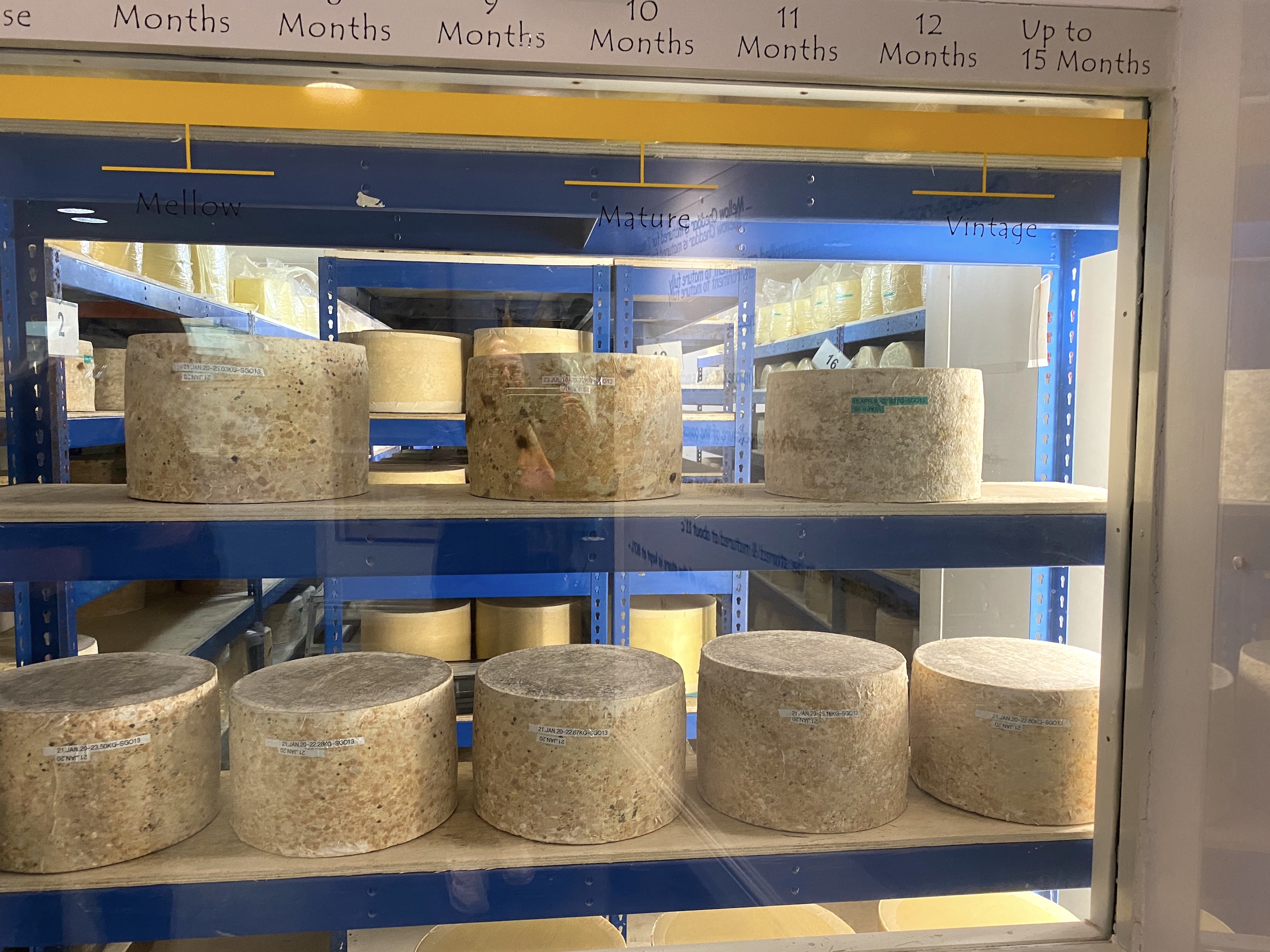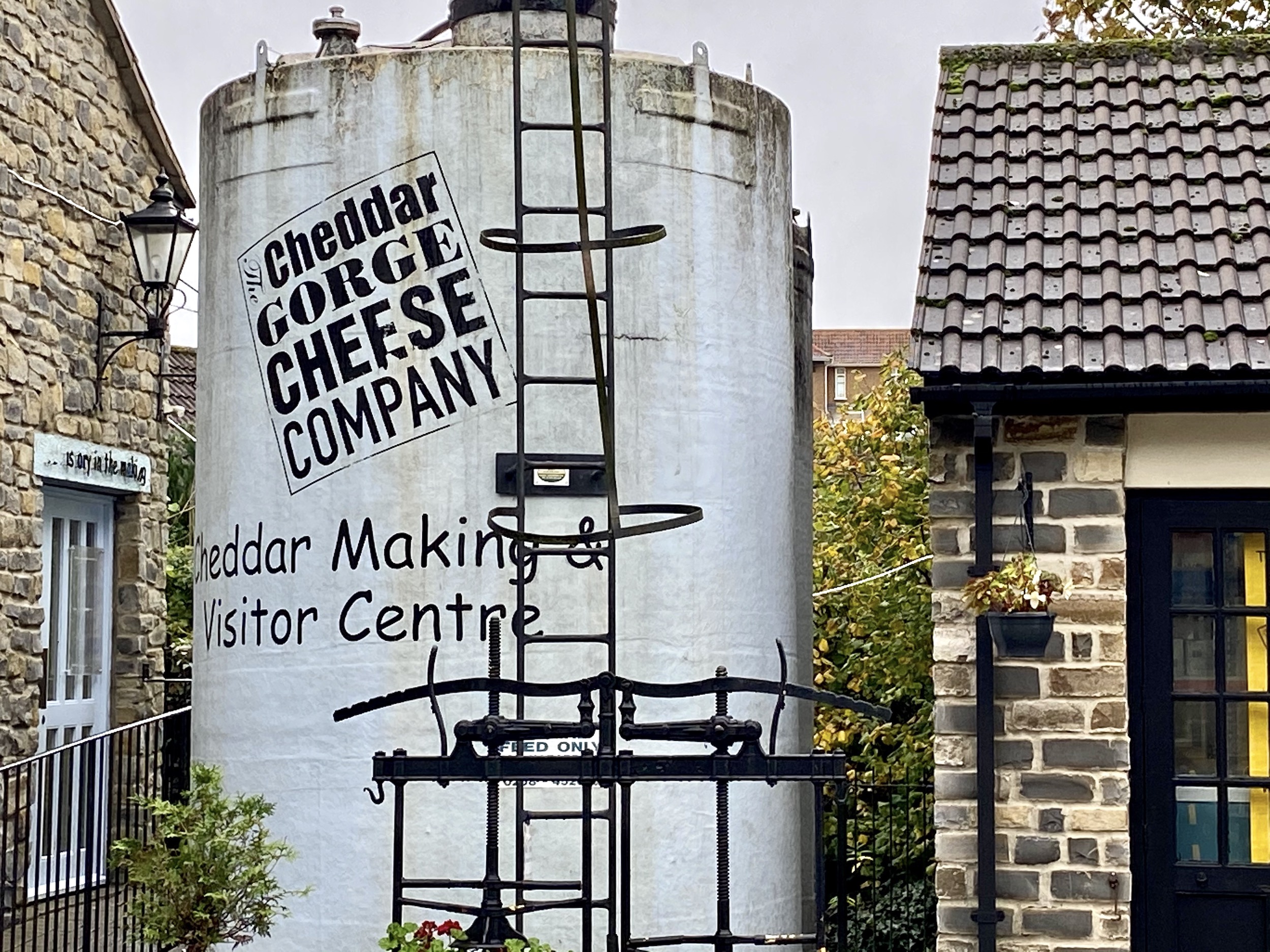
Big cheeses. Photo: © F.Hardy
Peter Welcome to our travel podcast. We’re specialist travel writers and we’ve spent half a lifetime exploring every corner of the world.
Felice We want to share with you some of our extraordinary experiences and the amazing people we’ve met along the way.
Peter This week, we’re veering slightly off our normal track to take a look at a food of British origin that’s tickled a palette of kings and commoners for the past 900 years. Back in 1170, Henry II invested in more than four and a half tons of it. While in the 17th century, Charles, I decreed that no meal at court was complete without a slice of the stuff. In the 1930s, President Andrew Jackson threw a party at the White House where guests were served from a 640-kilo block of it. Cheddar is the most popular cheese in Britain and the second most popular in the United States, where mozzarella takes the biscuit, so to speak.
But overall, the humble semi-hard cheddar is the world’s number one. Close and firm in texture, yet mellow in character or quality, it is rich with a tendency to melt in the mouth, the flavour full and fine – approaching that of a hazelnut. Well, that’s how the best quality cheddar was described in 1864 by pioneering cheesemaker, Joseph Harding. He did much to spread the popularity of cheddar right around the world.
Felice Originally, it comes from the Somerset village of Cheddar in the west of England. Cheddar Gorge is in the beautiful Mendip Hills, and it’s also known for its huge cave system. This first provided a shelter for mankind at least 9,000 years ago, until the remains were excavated in 1903, Gough’s cave was home to the oldest complete skeleton ever found in Britain. But Cheddar Man and his fellow cavemen didn’t eat cheese, which is probably just as well. His DNA shows that he was lactose intolerant.
Peter The caves provide the perfect temperature and humidity for maturing the cheddar. But it wasn’t until the 12th century that manufacture got truly underway. Originally, the cheese had to be made within 30 miles – 48 kilometres – of Wells Cathedral.

Wells Cathedral. Photo: © F.Hardy
This lovely little medieval settlement with its narrow streets and twice-weekly markets is the smallest cathedral city in Britain with just 12,000 inhabitants. Cheddar is just a 20-minute drive away and Wells makes an ideal spot for lunch if you’re planning on a visit to the caves. The city takes its name from the springs that bubble up here in the gardens of the bishop’s palace. These days, cheddar is manufactured all over the world and there’s only one traditional cheesemaker remaining in the village. We caught up with John Spencer of the Cheddar Gorge Cheese Company while he was hard at work, as usual, transforming local milk into the purest form of this ever-popular cheese. The only cheddar made in Cheddar.
John Correct.
Peter So is cheddar something like Champagne where it’s protected?
John West Country Farmhouse cheddar is protected. We don’t go under that umbrella.

Peter Anyone can make cheddar, can they?
John Anyone can try and make cheddar.
Peter I mean, in America you can buy cheddar. It’s not the same thing, is it?
John No, it isn’t.
Felice So is it a certain type of cow that you use for cheddar?
John No, you can use most cows. We buy from one farm, so we work very closely with them. And he has a mix of about three or four different breed. What it all comes down to is knowing the milk. We had a period where we had an indeterminate TB result that we had to move. The fat content of the milk was similar, the casing content was similar, but the cheese was completely different. I mean, we really had to work on it until we found we were getting what we wanted. So there’s all sorts of things in it, trace elements, etc.

Photo: © F.Hardy
Peter Does it all come as one strength? I mean, how do you create mild cheddar against strong cheddar?
John You can make it differently. We make it all the same way so that it’s made to last. Then basically it’s how long you mature it and where you mature it. So, for instance, we mature most of our cheddar in our stores, which run at about 11 degrees and have a humidity of around 85 percent. In the Cheddar caves it’s about half a degree different, but the humidity is up to about 98 percent. And you get a very different cheese after the maturing.
Peter Cheeses are matured in the caves here in Cheddar?
John Yes, they are.
Felice And what do you add to the milk to make the cheddar?
John Very little, I’m pleased to say. We add salt, we add a coagulant and we add a starter culture and that’s it. The rest of it is down to how we handle it. Making cheddar, or making any cheese, is basically turning a liquid into a solid. So all through the process, you’re driving moisture out and it’s how you do that that makes big differences in the cheese.
Felice So if people are buying cheddar, how can they look for yours? What’s the label say?
John The label says Cheddar Cheese Company. We’re a very small producer. We make about 70 tons a year. If you take the total British market only, it’s about 250,000 tons, so we’re small but we’re in the niche of traditional cheddar makers. Most cheddar is made with pasteurised milk, matured in plastic and that makes a tremendous difference to it. So if you then take the traditional sector, probably 500 tons, so 70 tons is reasonable. Within that, our biggest problem is marketing an artisan product with a commodity name.
Peter If you’re the only cheese in Cheddar itself, that’s obviously a very strong marketing ploy, isn’t it?
John It is, but it’s only good if you make decent cheese.

Photo: © F.Hardy
Peter So what happens to the waste?
John The whey. Absolutely the whey goes – you may have seen as we came in here – into large tanks, it goes into those tanks and then about every four weeks it goes off for pig food. So it’s all used.
Felice The nursery rhyme, Little Miss Muffet, must be based on it – ‘curds and whey’?
John Absolutely. All you need is a coagulant. I mean, we use all vegetarian products, not vegan but vegetarian. So for starters are vegetarian, the starter cultures are vegetarian, the coagulant is. And you can use lots of different things for a coagulant , like lemon juice. You probably get some odd flavours.
Peter How much does one cheese weigh?
John You can see them there. I know you can’t on a microphone, but you can see them there.
Peter That’s a pretty substantial size – 25 kilos is a lot of weight isn’t it?
John And unlike vacuum-packed cheese, we have to look after them during maturation. So they have to be turned and they have to be lifted and turned. You can’t turn them over, because at some point all the weight will be on the edge and it’ll crack. So you have to pick them up, flip them over, put them back. At 25 kilos a time, we don’t let our cheesemakers do more than about 120 at a time.
Peter Well, that’s a lot.
John It is when people start they look at you and think, I can’t do 120. There are three cheese makers they each make individually and they’ll all be responsible for some of the turning. I used to make cheese until I was 70 and then I thought I probably need to ease off a bit because it’s quite physical. I put on about a stone and a half in the first six months. So I mean, actually doing it keeps you going.
Peter It keeps you very fit. Yes, I’m sure it does.

Photo: © F.Hardy
Felice But can you make cheddar using goat and sheep’s milk?
John You can make a cheddar type but you can’t make cheddar. Cheddar is defined and actually I’m not sure whether it’s defined by milk, but I think it is. But you would have a very different product in the end.
Peter How long is the maceration period. How long do you keep your cheeses?
John Well, we don’t sell anything and four months we sell very little at four months. But the vintage now is…we like to sell vintage at around 24 months.
Peter And how long can you keep the cheese for and still be edible?
John I don’t know. We’ve never come across that. You come across cheeses that aren’t quite as good as other ones. A lot of it depends on the condition you keep it in. So I know in the US they keep cheese for five years, for ten years, so can get a ten-year aged cheddar. But as I understand it, they’ll keep that at around two degrees centigrade. So keeping it two degrees or 11 degrees, you’re going to get it completely.
Peter It’s very different.
Felice You have a shop here selling some of your products?

John We do. We sell a lot of our cheese direct to consumer, which we like to do. So they get the benefits of it and we do as well.
Felice So how do they find you?
John Online – Cheddaronline.co.uk
Peter John Spencer, thank you very much for appearing on the podcast today, and long may you continue to make your original and very special cheddar here in Cheddar.
Felice That’s all for now. If you’ve enjoyed the show, please share this episode with at least one other person! Do also subscribe on Spotify, i-Tunes or any of the many podcast providers – where you can give us a rating. You can subscribe on Spotify, Apple Podcasts or any of the many podcast platforms. You can also find us on Twitter, Facebook and Instagram. We’d love you to sign up for our regular emails to [email protected].
See also Mystery at Wookey Hole.
© ActionPacked Travel
![]()
- Join over a hundred thousand podcasters already using Buzzsprout to get their message out to the world.
- Following the link lets Buzzsprout know we sent you, gets you a $20 Amazon gift card if you sign up for a paid plan, and helps support our show.



